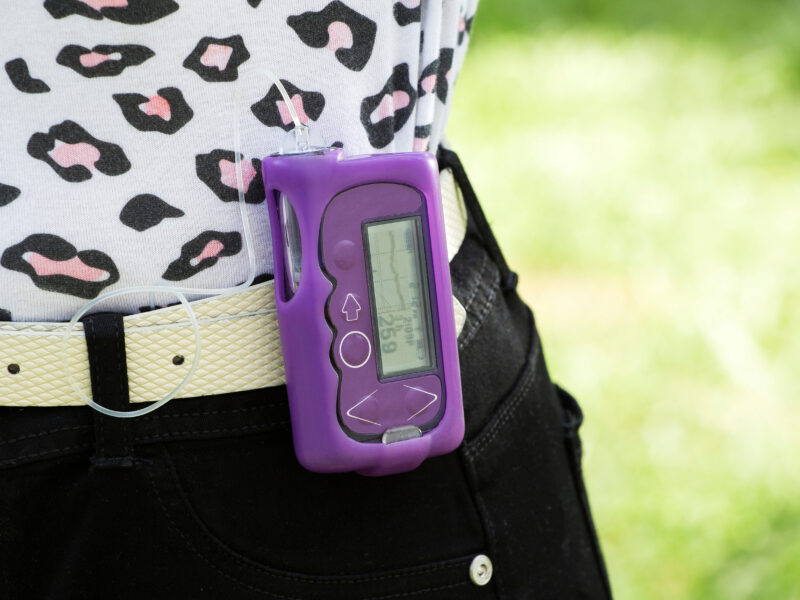Improving Outcomes for Infants and Children With Congenital Hypothyroidism
Improving Outcomes for Infants and Children With Congenital Hypothyroidism https://pediatricsnationwide.org/wp-content/uploads/2020/12/AdobeStock_32667489_mr-executive-functions-header-1024x575.gif 1024 575 Mary Bates, PhD Mary Bates, PhD https://secure.gravatar.com/avatar/d8c01b42dd4f98ebe33b59a37151ffdb0226803d9094f30793729669defbdf99?s=96&d=mm&r=g
A quality improvement project identifies high-risk patients and ensures they receive necessary care.
Congenital hypothyroidism (CH) is one of the most common preventable causes of intellectual disability. In the United States and many other countries, newborns are tested a 24-72 hours after birth for CH as part of standard screening tests. This condition must be diagnosed and treated promptly because delay in treatment can lead to irreversible developmental delay.
Approximately two years ago, Nationwide Children’s began a Quality Improvement project to improve clinical care and outcomes for patients with CH. At baseline, only 85% or fewer were getting adequate care for CH, as measured by achieving at least two normal thyroid stimulating hormone values, according to Cecilia Damilano, MD, an endocrinologist at Nationwide Children’s and co-leader of the project.
“We knew that we were underperforming and not optimizing care for these babies with CH,” says Kathryn Obrynba, MD, an endocrinologist at Nationwide Children’s and project co-leader. “And we recognized that ensuring best outcomes for these infants is essential, because good care of this condition is vital for their normal growth and development.”
As part of the project, Dr. Obrynba and colleagues developed a list of the patients with CH that are three years or younger and that have been seen in the clinic at least twice.
“If a patient is high-risk, meaning they either have poor adherence to their medication or are more likely to miss an appointment, we discuss potential barriers to their care and ways to address them,” says Dr. Damilano.
Drs. Obrynba and Damilano say that the QI project has evolved into case management, where each team of providers has a nurse lead to help coordinate care of the patients, with special emphasis on those deemed high-risk. This can include ensuring patients are getting the recommended lab work done and have a follow-up scheduled, as well as proactively calling families of high-risk patients to remind them of appointments. Sometimes this requires involving a social worker to make sure patients’ families have all the resources they need to help manage a diagnosis of CH.
Dr. Obrynba says the project has become the standard of care now for infants with CH, after multiple cycles, but she and Dr. Damilano would like to see it become more streamlined. The team is currently working on a new Standard of Practice (SOP), to be applied to those patients who do not show or cancel appointment.
Since the project’s inception, the numbers have been improving dramatically, says Dr. Damilano.
“Over the course of the past two years, we’ve increased those numbers to 95%. But it is an ongoing project, because as patients graduate, new patients come in. It is a lot of leg work to review these cases each month,” says Dr. Obrynba, who is also an assistant professor of Pediatrics at The Ohio State University College of Medicine. “But some extra work may be necessary to make sure that these babies are not falling through the cracks.”
About the author
Mary a freelance science writer and blogger based in Boston. Her favorite topics include biology, psychology, neuroscience, ecology, and animal behavior. She has a BA in Biology-Psychology with a minor in English from Skidmore College in Saratoga Springs, NY, and a PhD from Brown University, where she researched bat echolocation and bullfrog chorusing.
- Mary Bates, PhDhttps://pediatricsnationwide.org/author/mary-bates-phd/December 27, 2016
- Mary Bates, PhDhttps://pediatricsnationwide.org/author/mary-bates-phd/
- Mary Bates, PhDhttps://pediatricsnationwide.org/author/mary-bates-phd/
- Mary Bates, PhDhttps://pediatricsnationwide.org/author/mary-bates-phd/
- Posted In:
- Clinical Updates
- In Brief






